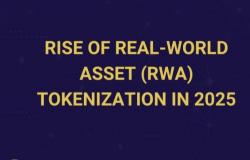Yield farming and liquidity mining have become central strategies for earning passive income in decentralized finance, offering returns that often exceed traditional financial instruments. However, these opportunities come with unique risks that require careful evaluation and management. Understanding the mechanics, strategies, and risk factors is essential for anyone seeking to maximize DeFi returns sustainably.
Yield farming involves deploying cryptocurrency assets across various DeFi protocols to generate returns through interest, trading fees, and token rewards. The term emerged during the 2020 DeFi summer when protocols began distributing governance tokens to users who provided liquidity or utilized their services. This practice, called liquidity mining, created powerful incentives that drove explosive growth in total value locked across DeFi platforms.
The fundamental mechanism of yield farming centers on liquidity provision to automated market makers and lending protocols. Users deposit token pairs into liquidity pools on platforms like Uniswap or SushiSwap, earning a share of trading fees proportional to their contribution. Similarly, lending protocols like Aave and Compound pay interest to users who supply assets that others can borrow, with rates determined by supply and demand dynamics.

Yield optimization strategies have grown increasingly sophisticated. Simple strategies involve depositing assets into a single protocol and collecting rewards. More advanced approaches employ yield aggregators like Yearn Finance that automatically shift funds between protocols to maximize returns. These aggregators handle the complexity of monitoring rates, executing transactions, and compounding rewards, though they introduce additional smart contract risk and fees.
Leverage amplifies both returns and risks in yield farming. Protocols like Alchemix and Abracadabra allow users to borrow against deposited collateral and reinvest borrowed funds to increase exposure. While leverage can multiply profits during favorable conditions, it equally magnifies losses and liquidation risk when markets move adversely. Conservative farmers typically avoid high leverage, while experienced participants carefully manage positions with stop losses and monitoring.
Impermanent loss represents the most misunderstood risk in yield farming. When providing liquidity to AMM pools, price divergence between paired assets creates opportunity cost compared to simply holding. For example, if one token in a pair doubles while the other remains stable, the liquidity provider captures less value than holding both tokens separately. Trading fees and liquidity mining rewards must exceed impermanent loss for the strategy to be profitable.
Risk assessment begins with evaluating smart contract security. Established protocols with extensive audits, bug bounties, and proven track records generally present lower risk than new projects. However, even audited contracts can contain vulnerabilities, as evidenced by numerous DeFi exploits. Diversifying across multiple protocols and never depositing more than you can afford to lose are fundamental risk management principles.
Stablecoin farming offers lower volatility alternatives to volatile token pairs. Strategies involving USDC-USDT or DAI-USDC pairs eliminate impermanent loss risk while still generating yield through trading fees and rewards. Returns are typically lower than volatile pairs but provide more predictable outcomes suitable for risk-averse farmers. Curve Finance specializes in stablecoin trading and often offers attractive stablecoin farming opportunities.
Governance token evaluation is crucial when assessing liquidity mining opportunities. Many protocols offer token rewards with uncertain long-term value. Understanding token economics, emission schedules, and utility helps distinguish potentially valuable governance tokens from inflationary rewards that will pressure prices downward. Farmers often immediately sell reward tokens to realize gains, while others hold based on protocol fundamentals.
Tax implications of yield farming can be complex and vary by jurisdiction. Many tax authorities treat rewards as income at the time of receipt, requiring careful record-keeping of transaction prices and dates. Frequent compounding creates numerous taxable events, potentially generating significant administrative burden. Consulting with tax professionals familiar with cryptocurrency is advisable for serious yield farmers.
Sustainable yield farming emphasizes long-term strategies over chasing unsustainable APYs. Extremely high returns often come from inflationary token rewards that quickly decline in value. Sustainable strategies focus on protocols with genuine revenue generation, reasonable token emission rates, and strong fundamentals. Blue-chip DeFi protocols may offer lower APYs but provide more stable, reliable returns over time.
Looking forward, yield farming continues evolving with improved risk management tools, cross-chain opportunities, and institutional participation. As the DeFi ecosystem matures, sustainable yields are converging toward more reasonable levels while infrastructure improvements reduce risks. Success in yield farming requires continuous learning, careful risk management, and realistic expectations about returns and volatility.






